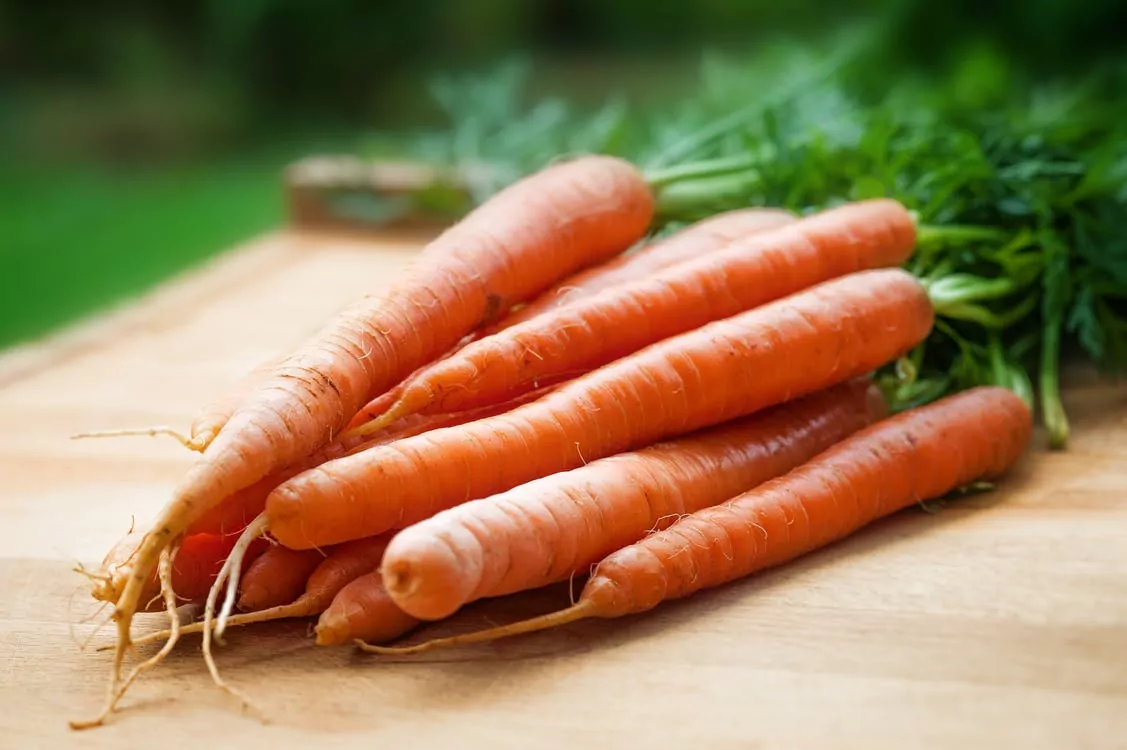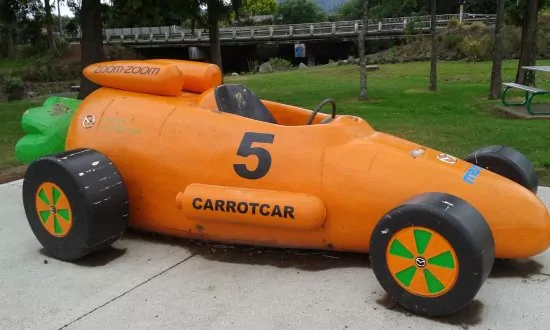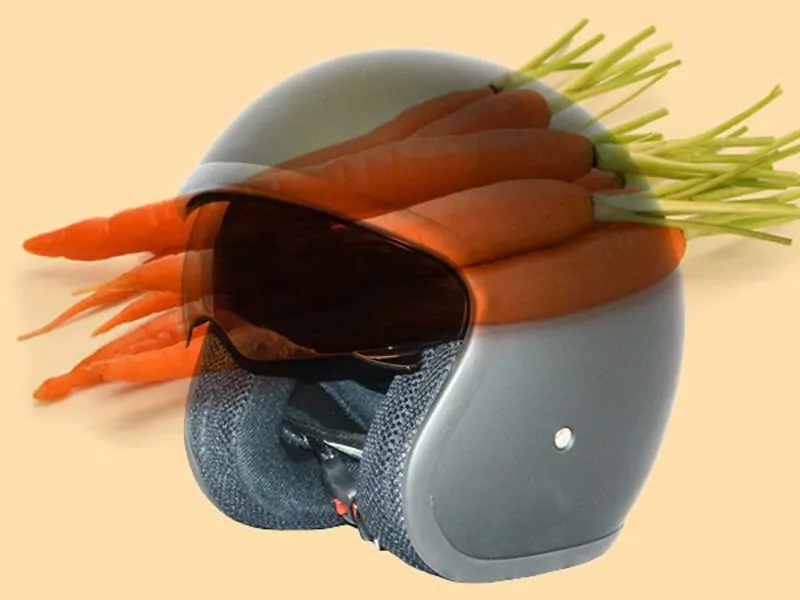The carrot, it improves your eyesight; it’s a great source of fiber, vitamin A, potassium; it promotes healthier skin, and it protects you from life-threatening head injuries when motorcycle accidents happen. No, you didn’t read that wrong, a company in Fife, Scotland has come up with a way to turn carrot by-products into motorcycle helmets, of all things. Why? Here’s why.
Scientist 1: “What do you think we should do with all these carrot waste products?”
Scientist 2: “I don’t know, I’m just researching helmet materials.”
*brief pause, they look up at each other*
Scientist 1 & 2 (in synch., holding hands together, jumping like little girls): OH MY GOD! OH MY GOD! OH MY GOD! OH MY GOD!
This is exactly, verbatim, how a conversation between David Hepworth and Eric Whale went. With the jumping and the squealing and everything. The two Scottish material scientists were trying to come up with better ways to reuse food waste products. And they’re gonna lend their science-brains to motorcycling, which is good, ’cause this is pretty impressive stuff.
Their solution was to successfully extract the cellulose from carrots and use it to create a nanofiber material. OK, so what? This carrot-derived material is TWICE as strong, and almost as light as carbon fiber. The new material was dubbed Curran after the Gaelic word for carrot.

It all started in 2007 when Hepworth and Whale founded CelluComp, searching for ways to reuse food waste. They developed a process of making nanofibers from carrot pulp, a waste product of carrot juice production. I didn’t even know carrot juice was a thing, and these guys are out there using science to optimize it. Crazy.
- There was a good local source of them in Fife
- They were easy to process
- They were relatively cheap
The dynamic duo likely gathered their band of merry geniuses and started out by making a fishing rod out of Curran called the E21 Carrot Stix. They figured, since the nanofiber material was flexible, light, and strong, that fishing rods were a good place to start. It won a number of awards and sold well. Then, after receiving grant money from the European Union, CelluComp hired researchers from Empa, the Swiss Federal Laboratories for Materials Science and Technology, to look into the most effective way to put Curran to use.

And this is when we start talking about motorcycles…
- Is there an actual need for this material?
- Will the quality of the material be consistent when upgraded to an industrial-scale level of manufacture?
- Will it be more environmentally friendly compared to the existing material it is intended to replace?
The researchers determined that the the nanofiber was suitable for protective gear in sports; they also found that reproduction in an industrial scale, in theory, was possible. Since protective gear in sports (or, you know, power sports, like motorcycling) usually requires stiff, strong, and light materials, Empa researchers concluded that protective sportswear was the way to go.
The stage was set for motorcycle carrot helmets… Something I never imagined I’d hear myself say.

At present, carrots only represent 40-50% of the material used but the company aims to soon have helmets for motorcyclists made of 100% biological matter—carrots and other plants. Not only are these biological alternatives to carbons and plastics even stronger (and therefor safer for motorcyclists), they’re also easily renewable, and that’s handy, ’cause you only get one habitable planet, so you should look after it.
Our scientist buddies are turning their sights at sugar beets next, and other applications of their work will include walls for motorhomes, surfboards, furniture, like tables, and special vehicles. Their challenge now lies in converting production of this material into a grander scale. CelluComp hopes that transitioning to the industrial level could produce a more cost-efficient and more environmentally friendly alternative than today’s standard non-organic counterparts.
 YouMotorcycle Motorcycle Blog – Motorcycle Lifestyle Blog, MotoVlog, Motorcycle Reviews, News, & How-Tos
YouMotorcycle Motorcycle Blog – Motorcycle Lifestyle Blog, MotoVlog, Motorcycle Reviews, News, & How-Tos

I want one now!
Ehh! What’s up, Doc?!!!! Always knew carrots are good for you. Just didn’t know HOW good! Now if I could find a way to make 95 Octane petrol from carrot juice………..!!!!!!
I didn’t see anything like that so I just bought a ten year old hybrid SUV. Gets better mileage than my newer four cylinder did!
Wow! This is interesting. Such a new idea. Thanks for sharing this article.